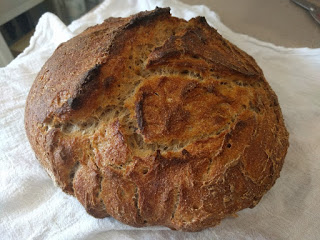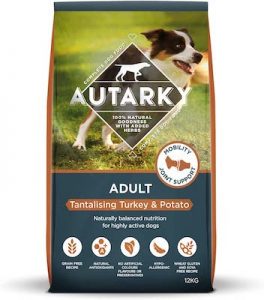For as long as dogs have existed they’ve had to eat. Before they were domesticated they would hunt and kill in packs for their meal; but once they were domesticated (roughly 18,000 years ago) it started to become the human’s duty to help them eat. As we learned from the research conducted in the creation of this article this was not a gradual process: their diet changed as humans changed the world and advanced in their own food making technologies.
This article aims to finally be the place with the most detailed account of the evolution of dog food and lists the key events in history which changed how dogs were fed by humans.
James Spratt, an English businessman, invented kibble (commercially prepared dog food) in the 1860s. But the idea of canned dog food didn’t exist until 1922 when the Chappel Brothers came up with the first mass-produced and canned product called the Ken-L-Ration.
What did dogs eat before dog food?
Before proper dog food was invented, dogs were mostly fed lard, hardtack, potatoes and cabbage. Some lucky dogs straying or domesticated in port cities could get some leftover horse meat. But a dog’s diet wasn’t as balanced and well thought of back then.
Pre-domestication
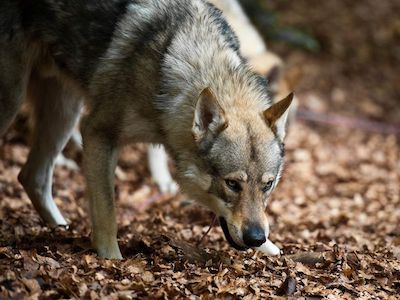
Before being domesticated, dogs (or rather ancient wolves) fended for themselves – they were predatory carnivores and would hunt in packs and eat their kill. They would get all of their calories from the kill, which would have been very rich in protein and fat, which is the perfect combination for a dog who needs to be strong and be able to keep warm during the night. Wolves would most likely have eaten the entire carcass, meaning the bones and organs would have been consumed.
It’s important to note that these ancient wolves would be completely different to what we see today, and their digestive system would be more than capable of handling raw meat. In fact, despite a resurgence of feeding raw meat to a dog, they would struggle to digest without getting sick from the bacteria, and they’d be unlikely to digest the bones and organs properly.
As you’ll read in this article, the domestication process of dogs and how dog food has changed over the years means that the diet of ancient wild dogs is just not compatible anymore. Still, it is an important event to cover to give some context to the evolution.
Early Domestication (18,000 – 45,000 years ago)
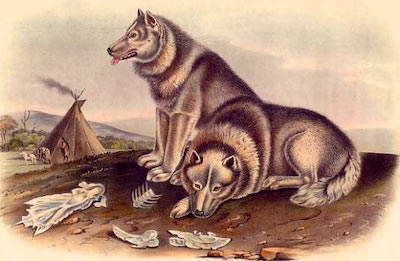
Scientists can’t agree on when exactly dogs became officially domesticated as the process of wolves turning into dogs would have been gradual over thousands of years of breeding and adapting to their new lives.
However, in terms of diets, the early domesticated wolf would have been unable to digest anything but animals properly. The likelihood is that they would have continued to eat meat through hunting or given to them by their new owners. But this was all about to change albeit slowly.
Clearly, owners needed to keep their dogs fed but they were unable to offer them raw meat all of the time, they needed to try and feed them something else, something that was cheap and easy to get a hold of.
In research conducted by Erik Axelsson published on Nature.com the findings suggest that early domesticated dogs’s digestive systems began to evolve to accommodate starch and sugar; something wolves would not be able to. This theory suggests that early domesticated dogs diet began to include scraps from their owners and less reliance on raw meat. In effect, this began the process which led to modern canines being able to digest kibble.
Cereals, bones, potatoes and whatever the owners would have eaten is likely to have been incorporated alongside the dog’s usual raw meat to keep them going. However, farming was not yet common so the quality and the volume of non-meat scraps will have been relatively low. As a side note, there is evidence that early man began to cook meat 1 million years ago so early domesticated dogs probably had a taste for themselves.
Over the course of thousands of years, dogs slowly evolved to be able to digest this new diet. At this stage, dogs would have never known where their next meal was coming from and as such would eat everything they possibly can – this kind of behaviour still exists this day and could explain why dogs never seem full even after they’ve just eaten. This kind of behaviour would be called ‘feast or famine’.
Indeed, their prey drive still exists today so it’s important to note that these ancestral dogs would have continued to hunt prey to get the bulk of their calories and nutrition. Despite being domesticated they would have not struggled to find prey. The dominance of modern civilisation and the collapse of a lot of natural wide open spaces for prey wouldn’t affect their options until at least the 1700s.
It would be quite easy to imagine that early domesticated dogs would still be in packs with owners but would often leave their presence and hunt and kill anything they see.
Domestication and Early Farming (12,000 years ago)

According to NPR, humans began to farm basic crops such as peas, lentils and barley 12,000 years ago with records showing it happened in the Iran/Iraq area. During this time the role of the dog started to change significantly to resemble the kind of working dogs we have today. However, at this time dogs would have still been very large and powerful dogs and not quite the size and slenderness of the modern day Collie (for a guide to Collie crossbreeds, check out our article on Sprollies).
This farming process not only changed the diets of the humans at the time but the dogs as well. They would have likely been given some of the crops to eat which would have caused havoc with their digestion and started the chain of events which led to modern dogs being able to digest those kinds of foods without problems.
By this point, dogs would have started to become more and more domesticated to the point their behaviour began to change from hunter-companion to working dog which could help protect the crops from other animals.

It’s likely that their main source of food would still be coming from the spoils of the hunt which would be raw meat (and the rest), as farming techniques would still not be anywhere near what they are today nor would be the refining of the crops, either.
Domesticated Livestock and A New Source Of Meat (9,000 years ago)
According to How Stuff Works, humans began harvesting and domesticating livestock 9,000 years ago. This meant that humans had easier access to meat and other animal byproducts such as their wool and hides. It would not be beyond the realms of imagination that their faithful companion dogs (who would have domesticated for quite some time at this point) also got in on the action and got a hold of meat that they didn’t have to hunt for as well as bones etc.
This could signal the turning point when dogs stopped being just hunters who would roam with their humans and started becoming working dogs who would not only hunt but guard the growing agriculture boom without as much need to travel long distances in search of food and shelter.
Next level farming and an abundance of starch (7,000 years ago)

Looking at the same study by Erik Axelsson, Science Mag state that 7,000 years ago dogs started to eat so much wheat and millet that their bodies were forced to create more starch digesting genes to cope. This is clearly because the farming skill of dog owning humans reached such a level that there were an abundance of crops, more than enough to feed their dogs who at this stage probably needed to hunt less and less as they got so many calories from crops.
To put it into context, dogs have between 3 and 30 starch digesting genes whereas (modern) wolves only have two. Without these genes, modern day dogs would not be able to eat the mass produced kibble we feed them today. It’s worth noting that humans also went through a similar change to get these new genes to adapt to their new diet.
Around this time, physiological changes would have also happened particularly in dogs teeth and jaws – their teeth slowly became larger and more flat to be able to properly chew the food they were given rather than the razor sharp teeth of wolves which are designed to tear meat off the bone. However, human interference in terms of selective breeding will have been the biggest factor in the physical evolution of dogs.
Startlingly, we are still thousands of years away from canned wet food and crunchy kibble but it’s clear just how much influence humans have had on a dog’s diet and in fact their entire evolution to the present day.
The evolution and history of dog food still has plenty of twists and turns before we get to the present day.
330-37 BC – Introduction of whey (2,330 years ago)

Around 37 BC we have a quote from an Ancient Roman poet Virgil who said “nec tibi cura canum fuerit postrema; sed una veloces spartae catulos, acremque molossum, pasce sero pingui:” which translates to “Do not let the care of dogs be last; but the swift Spartan hounds, and fierce Mastiff, Feed the whey”.
From this quote we can deduce that humans cared about the quality of the dog food given to their companions and that dogs should not be seen as an afterthought “do not let the care of the dogs be last”.
It is also evident that, at around 37BC, the ingredient of whey is now added and encouraged along with what we already understand up to this point which was meat and crops. This does not tell us when whey was first introduced to dogs, though.
Whey is a common animal byproduct widely used in protein shakes, baby formula today. Whey was discovered approximately 5,500 years ago in Poland. But, the milk curd was thrown away and it wasn’t thought to be edible until 2,500 years ago and was even prescribed to sick patients by Hippocrates of Kos.

Whey would have been a great addition to a dog’s diet as it is very fatty and full of protein similar to meat and certainly healthier than carb rich crops.
Therefore, the time whey was actually introduced to dogs is still unknown but can be estimated to be between 330 BC and 37 BCs based on the quote from Virgil and later its use by Hippocrates. It is unlikely that dogs were fed only whey so we would make the assumption that they began to have quite the varied diet of meat and meat scraps, wheat, barley and byproducts of these ingredients and whey.
Virgil certainly didn’t invent dog food but he was one of the first known sources to write literature on how to care for dogs.
70 AD – Varied diets and inclusions in agricultural guides (1,950 years ago)

In 70 AD, a prominent Roman agriculture writer called Columella pretty much confirms everything JugDog theorised up until this point but in his work On Agriculture with one addition – if you can’t give your dog barley (confirms our suspicions that dogs still eat crops) and whey then try to give them bread mixed with the ‘liquid from cooked beans’.
This suggests a couple of things about dog food at the time: meat may not be so readily available from farming livestock as to give them to the dogs but also that they no longer hunt for their meat. This isn’t to say it is true for every dog around the world at the time.
We’d theorise that the typical dog’s source of food at this point was entirely the responsibility of their human owners and keepers. This was probably the case for quite some time but there wasn’t any confirmation until Columella’s work. Whey is once again mentioned and given further recognition as a staple ingredient of a dog’s dinner. It appears that Virgil’s recommendations were followed by the mass population.
It’s interesting that Columella mentions adding the liquids from cooked beans, this is likely to make the dog food palatable similar to how dog owners in the present day would mix in wet food alongside the dry kibble. As an interesting side note; it’s clear that the actual beans are too valuable to feed to the dogs!
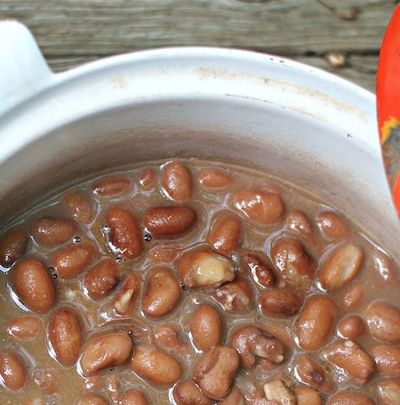
224-651 – Recognition of the companionship of dogs and the importance of a suitable diet (1,796 – 1,369 years ago)

In a series of literature called the Vendida collecting in works called the Avesta there is a specific chapter related to dogs written by Ahura Mazda who specifically discusses a diet which is suitable for dogs at the time which reads “O Spitama Zarathushtra! It is the dog, of all the creatures of the Good Spirit, that most quickly decays into age, while not eating near eating people, and watching goods none of which it receives. Bring ye unto him milk and fat with meat; this is the right food for the dog”.
Within this quote we learn that Mazda connects a dog’s relatively short life is due to the fact they were not eating near people and instead they were able to see many human foods but not allowed to eat them themselves. He is therefore suggesting that in his view, dogs would benefit from eating near their owners and even eating the same ‘goods’ as them to prevent premature ‘decay into age’ by the dogs.
Within the final line, Mazda specifically addresses the contents of dog food at this time which is milk and fat (possibly still whey) and meat. We’ve previously made the assumption that dogs still ate meat despite a lack of quotes but the Vendida confirms our suspicions. We can also assume that meat is now accessible enough for dog owners to feed it to dogs.
Interestingly, the Vendida doesn’t cover feeding dogs wheat and barley (or products made with those as ingredients) but we know from future entries that this was still fed to some dogs in some areas of the world.
1200 – Medieval Dog Food (800 years ago)
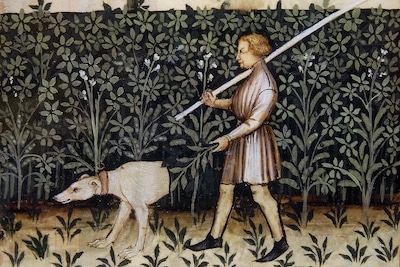
Towards the end of the middle ages it became more and more obvious from various pieces of literature that dogs were becoming more and more like pets and not just companions guarding the home, the farm and during a hunt according to Dr Kathleen Walker-Meikle author of ‘Medieval pets’.
This changing dynamic and the constant progress of farming and understanding of nutrition would have had a direct impact on the food the dogs at the time would have been fed by their masters. An example of this came from Gaston III who wrote in his book on hunting entitled ‘Livre de Chasse’ and paraphrased by Medievalists: “Besides being fed bran bread, the dogs would also get some of the meat from the hunt. If a dog was sick, he would get better food, such as goat’s milk, bean broth, chopped meat, or buttered eggs.” Finally the dogs get some beans!
He goes on to add: “dogs were to be fed small portions several times a day. The food was usually meat soaked in a beef soup, but could also include bread and milk, and would be served tepid or cold so that dogs would not vomit it.”
This is the first time we’ve learned about how often a dog is fed in the past but it also reaffirms how constant a dog’s diet has been for thousands of years; consisting of meat, bread and milk. So, it would seem that the scholars at the time had moved on from whey and now on top proper milk under the assumption that farming methods had come a long way where milk was in abundance. The liquids from cooked beans are still in use.
It’s important to note that this book was based on the diet of a hunting dog so the likelihood is that many other working or companion dogs may not have necessarily got their meat from hunting but rather from livestock and scraps.
1770 – First appearance of ‘wet’ dog food? (250 years ago)
In an entry to a French dictionary called ‘Nouveau dictionnaire universel des arts et des sciencies’, the author mentions that dogs can be fed a pate which contains a mixture of bread crumbs and little pieces of meat given to pets and presented as a moist paste. In another French scientific journal called ‘Encyclopédie ou dictionnaire raisonné des sciences des arts et des métiers’, they mention the practice of removing the liver, heart, and blood of a downed stag and mixing it with milk, cheese, and bread, and then giving it to dogs.
Since the middle ages it seems the content of dog food is still roughly the same – meat, milk and bread. This has arguably been their diet for thousands of years as we’ve alluded to up until the point.
The biggest change in terms of dog food during this time was the quality of the food given the dogs who belonged to wealthy owners. It is also understood that dogs were more commonly seen as pets now and not just working dogs so the diets between the two probably varied in the quality of the ingredients.
When you really look into it there isn’t much difference between meat, milk and bread and what dogs eat in the present day. However, it’s clear that historically the owner would have had to go into a lot of effort to obtain it and the kind of food dogs would eat would perish quickly.
1860 – Birth of the dog food industry (160 years ago)
Up until this point there were many people who would give guidance on what dogs should eat but it was really left to the individuals to get the ingredients together and feed them. The question of who invented dog food is unanswered but at least we know what they ate before its invention.
There was no company at the time which would pre package them all and sell them to the masses. Enter James Spratt.
James Spratt was a salesman who travelled from Ohio to London to sell lightning rods. Upon docking in Liverpool in 1850 (not too far from JugDog HQ) Spratt noticed dogs grouping together in the hopes of getting some uneaten ‘ship’s hard tack’ and presumably enjoying them. Ship’s hard tack were a simple snack which didn’t spoil quickly and had some basic nutrition making it ideal for travel. Ingredients were stone ground flour, water and salt, which were mixed into a stiff dough, baked in a hot oven for 30 minutes and then left to harden and dry. At this point we know that dogs were not strangers to these ingredients.
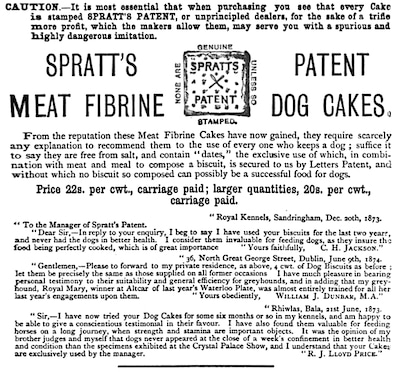
After this discovery, Spratt went to work mass producing these biscuits by offering them to the middle and upper classes and then beyond after that. The rest is history but this was a significant development in terms of dog food as it demonstrated two things.
- There was a demand from dog owners for ready made food
- There was money to be made in the newly formed dog food industry
These biscuits weren’t just rebranded Ship’s biscuits, Spratt made some notable changes to the formula which includes the inclusion of meat. However, what remains a bit of a mystery is the exact details of the meat. Nevertheless, they were a smash hit and following massive success enjoyed in the UK Spratt moved back to America to establish America’s dog food industry as a pioneer.
Spratt’s was acquired by General Mills in the 1950s and they continue to make dog food using the Blue Buffalo brand.
James Spratt didn’t invent dog food but he did invent the dog food industry and despite everything that we’ve covered up until this point this is likely to be the biggest catalyst in the evolution of dog food so far.
1880 – Improving the Formula – Medicated Dog Bread (140 years ago)
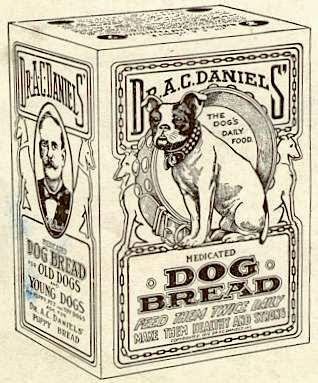
Despite James Spratt’s work, most dogs were still fed human foods such as meat (often raw) milk, bread and if they’re lucky a dog biscuit. In 1880 American Veterinary A.C. Daniels released his medicated dog bread which claimed to be a much more refined snack free of ingredients which led to “indigestion, constipation and skin ills”. Read more about that here.
This tells us that 140 years ago dogs still did not receive enough fibre which would lead to these conditions. ‘Skin ills’ are also borne out of a poor diet and possibly allergies from certain ingredients such as grains.
Unfortunately, a trend of big companies was to package inferior goods unfit for human consumption, put them in a bag and package them as dog food. It could be argued that dog food took a turn for the worst at this point in time as the thought of making money came before the wellbeing of the dog. This practice can sadly still be seen today albeit not on the same scale.
A.C. Daniels was the first person post industrial revolution to think about the nutritional needs of the dog but they were certainly not the last. This is a strange sentence to write considering there were scholars thousands of years ago that recommended a good diet and now only a few hundred years ago that seems to all be forgotten about thanks to the growth of capitalism.
As an early spoiler, it won’t be until 1964 before the Pet Food Institute came in to try and regulate the industry.
1908 – Level up for dog biscuits (112 years ago)
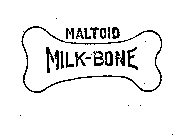
In 1908 a company called the F.H. Biscuit company (who was later bought out by NABISCO) developed new and improved dog biscuits which were shaped like bones. They were sometimes labelled as Maltoids – malt referencing the key ingredient in their production. Between 1915 and 1926 cow’s milk was introduced as a core ingredient which led them to become a brand which should be familiar with any dog owner – Milk-bones.
As we’ve covered extensively, dogs are no strangers to dairy and were able to digest these biscuits well enough for owners to keep giving it to them. Over time, meat was introduced to these biscuits to add a variety of flavours on offer. Milk-bones would have not been given as a dog’s main source of food but these would have been used alongside these meals to help with training and bonding.
Dog treats aren’t ‘dog food’ but it’s an important event in time as it shows that dogs are now fed treats alongside their meals and further evidence that the dog food industry was in full operation. Some articles suggest that owners would in fact feed them just these dry biscuits.
Dogs were firmly seen as pets and companions now with many not used as working, guarding and herding.
It wouldn’t be long until someone monetised the entire diet of the dog…
1922 – Dog food gets canned and mass produced (98 years ago)
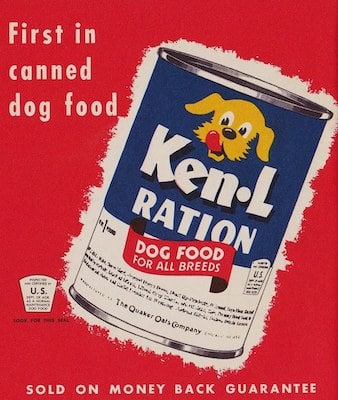
Canned dog food began life as horsemeat and was introduced in 1922 by the Chappel Brothers and was called the Ken-L-Ration. They started off using excess horses left over from World War I and then by the 1930s they began breeding horses for the purposes of making dog food. Horse meat has had a troubled past not just in the United States but elsewhere, too. Yet, this is how canned wet dog food began life, like it or not.
The question of who invented dog food has finally been answered.
This food became so cheap and convenient that it quickly dominated the market and crushed the previous makers of dry food and biscuits. By 1941 and the outbreak of World War II, canned dog food had 90% of the market share which meant that an overwhelmingly large majority of dog owners fed their dogs either Ken-L-Ration or another brand.
Ken-L-Ration became so big that they began advertising on radio program shows such as Rin Tin Tin.
Despite it’s murky beginnings, the exploits of James Spratt and the Chappel Brothers started a trend which has more or less stayed the same since – you feed your dog wet meat and treat them with biscuits. However, the days of dry dog food were far from over once the world engaged in warfare once more.
1925 – Introduction of dog meal (95 years ago)
Despite the dominance of Ken-L-Ration, other manufacturers were still looking for new ways to exploit the growing dog food market. In 1925 American company Gaines-Burgers developed the technology to create meat meals. Meat meal involves a process of over-cooking the meat until it becomes a concentrated protein powder. This powder can then be pressurized so that it forms something similar to what we know as kibble.
This kibble was originally sold as massive 100 pound bags before they were then reduced to 10 and 5 pound bags. Meat meal was easier to mass produce, needed less original meat to work with and still provided a lot of nutrition to the dog.
This meat meal was a delight to owners but dogs could often find it difficult to chew and struggle with digesting – probably due to the high protein content and not so much fibre (fibre isn’t found in meat).
Gaines-Burgers were successful but they were still up against the empire of Ken-L-Ration and so made slow progress. By 1943 Gaines was a national brand and was purchased by General Foods.
1956 – Rationing meat and the emergence of dry dog food kibble as a big player (70 years ago)
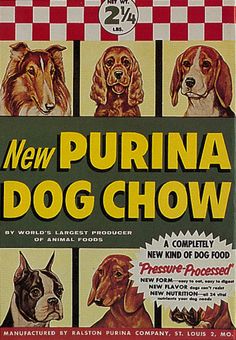
The boom of horse meat filled canned food burst after the outbreak of World War II as food needed to be rationed for soldiers and people at home, even household ingredients such as flour became harder to come by which affected the biscuit industry – if there was any flour it would more likely be used for human consumption rather than dogs. Dry meat meal still wasn’t able to dethrone the likes of Ken-L-Ration but the tide was about to turn when Ralston Purina (yes, that Purina) started using their extrusion method from their cereal line to dog food a few years after the war.
Canned food took a downturn during the war and it’s slow recovery enabled new technologies to take a big bite of the market.
The extrusion method is summarised perfectly by nineteen87.co.uk – “the extrusion process itself works by combining the wet and dry ingredients in the recipe to make a doughy mixture. This mixture is then put in a machine called the expander that cooks it using pressurised steam or hot water.”
Purina were already using this method to create their Chex cereal, all they did was apply it to dog friendly ingredients and in 1956 the world had its first ever dry dog food – Purina Dog Chow.
However, this was not necessarily a great thing for the dog – early use of extrusion could destroy a lot of the nutrition, especially fat and protein so it was a case of convenience and price in exchange for a decent meal. All the moisture is taken away.
Despite its controversies, canned horse meat was probably closer to a dog’s natural diet than dry kibble. Dry food in the 1950s, 60s and 70s was not nearly as nutritious as the dry dog foods you can buy today.
But, the advertising and marketing machine were in motion and there was nothing stopping them.
1964 – Processed is best and the introduction of the PFI and PFMA (56 years ago)
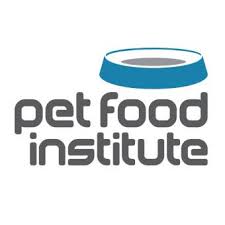
The reason most people around the globe, especially in the US and UK, believe that processed food is the best food is because of the introduction of the Pet Food Institute and the Pet Food Manufacturers Association in 1964 and the mid 70s. The entire dog food market now had a centralised voice and a recognised authority behind it and a wealth of money to be able to market not the brands but the whole idea of ready made dog food as being superior.
These two giant bodies brought a lot of good in the years following their foundation but it was a turning point that processed dog food was now the only thing owners should feed their dogs and all other diets (such as raw food) were substandard and not ideal (see also ‘AVA Dog Food Reviewed‘).
This was a major turning point in the industry and comparable to how the formula milk industry had the power and wealth to crush any opposing pro-breastfeeding groups. The marketing was so intense (and still is) that it is difficult for anyone to believe otherwise.
However, this change was not negative overall. These ‘governing bodies’ and others which are similar helped to dramatically improve the quality of the processed food and without their research dog food would not be where it is today. It may have started off as a way to cheaply feed dogs without a thought about the nutritional content but today the dog food standards are far and away better than 50 years ago.
1982 – Feedingstuffs Regulations and establishment of nutritional requirements (38 years ago)
In 1982 the first specific legislation regarding pet food was introduced and called the Foodstuffs Legislation (original copy) for the UK. In 1985 the American equivalent NRC published their dog/cat nutritional requirements manifesto.
These two pieces of legislation and literature demonstrated that manufacturer’s needed to take more responsibility for what is in their product to ensure that it was labelled correctly and were free from a certain list of additives and contaminants. Since they were published they have been updated non stop as research was conducted round the clock.
There’s no need to go into specifics here except to highlight when this movement began and what impact it has had on the food in your dog’s bowl today. Slowly, but surely, scientists discover what the perfect man-made meal for a dog is and how it can be manufactured safely and cheaply. Without these rules and laws manufacturers would be free to put whatever they want in their product at the expense of your dog like the early days of biscuits and the Ken-L-Ration.
History has shown that humans and dogs have gotten along for thousands of years and many scholars wrote about the importance of a good diet. Sadly, when the dog food industry boomed the focus was more on the money but thankful history was corrected with the introduction of these governing bodies.
Dog food was only going to get better from now on.
2002 – Setting high standards – FEDIAF animal feed legislation (18 years ago)
At this point in time every country and continent had their own internal method of establishing good practice when it comes to making pet food. We only try and add key moments in this article so it’s important to remember there were plenty of updates and improvements to dog food outside what we’ve covered here.
However, as we are an UK website the biggest noteworthy change since the last is the introduction of FEDIAF’s (European Pet Food Industry Federation) 2002 regulation which establishes the ‘food law’. This massive piece of legislature lays down food safety requirements, traceability and the responsibilities feed business operators have over their product.
Using scientific research, these new rules ensure that the food your dog will eat (in the EU, anyway) is safe and has a minimum level of nutrition. Since 2002, it has been a constantly evolving piece of legislation which tightens how much manufacturers can get away with. The latest update was in 2018 which should demonstrate how pet food standards are still actively working to continuously improve the pet food industry.
2006 – Establishing the nutritional requirements of dogs (and cats) (14 years ago)
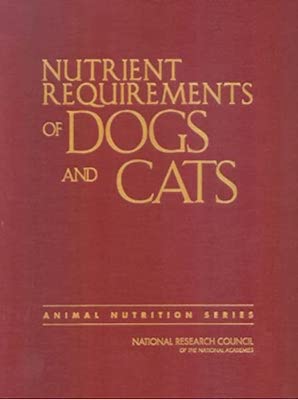
In 2006, the NRC released the guide on the nutritional requirements of dogs and cats. In 2008, using NRC’s work FEDIAF then published their own set of requirements. This guide differs from the legislation as it specifically discussed the nutrients and minerals dogs and cats needed rather than how safe it is.
This work changed the industries thinking from ‘what we think dogs need’ to ‘what we know dogs need’ and paved the way for many new ingredients to start to be added to finally offer a ‘complete and balanced meal’. This important piece of work is why your shop bought dog food now has more vegetables, less meat and many more beneficial additives such as fish oil, prebiotics and fibre.
These guidelines have been updated as little back as 2019 and are constantly evolving. The NRC and FEDIAF work together to now be able to offer guidelines for elderly dogs, dogs with allergies and even to cater for specific breeds. Puppy food in particular is well researched.
2020 and beyond
Today’s households differ in terms of what dog food is offered to their faithful companion. However, a balanced view would see modern dog food as a mixture of wet dog food which may be canned or in pouches as well as dry dog food made with the extrusion method.
However, today you have a wide range of options which can cater to activity levels, breeds, life stage and health issues and that’s thanks to a competitive capitalism climate where every manufacturer looks for an edge to win dog owner’s attention. Not only that, the regulatory bodies which started as a way to market processed food effectively ended up being a group which pushed the quality of the food as far as they can and continue to do so today.
Modern dog food may not be the natural way but it has become so good that it’s about as close you’re going to get without literally offering them raw meat – which we must add may not be the best anymore due to the change in modern dogs digestive systems which ironically humans helped to create.
As technologies continue to improve more and more products and innovations are made such as dehydrated dog food and bespoke dog food packages so who knows what the future holds!
Summary – What we’ve learned
The history of the food humans have given their dogs is tens of thousands of years long and has been constantly involved. Humans have always shown an interest in how to feed their dogs and varying opinions on what to give them. What our research has shown though is that humans more or less controlled the evolution of doggy diets and our influence is the reason they eat what they eat.
They began with a raw diet and the spoils of the hunt, to wheat and barley from crops, to whey and milk, dog biscuits, canned horse meat and now a mixture of wet dog food and dry kibble.
What’s clear is that there are two major timelines which are pre mass production and post mass production. In our opinion, James Spratt and the industrial revolution had the biggest impact on dog food and that was only 150 years ago in a history which could have gone back 45,000 years.
Modern dog foods have come a long way and if you look at the ingredients on the label it’s clear that they are now eating the same kind of foods humans do, except it’s presented differently. There is also a new wave of raw dog foods emerging on the market which takes a dog’s diet to thousands of years ago.
We hope you’ve enjoyed learning about our take on the history of dog food and if you have any ideas for inclusions or corrections please let us know.

